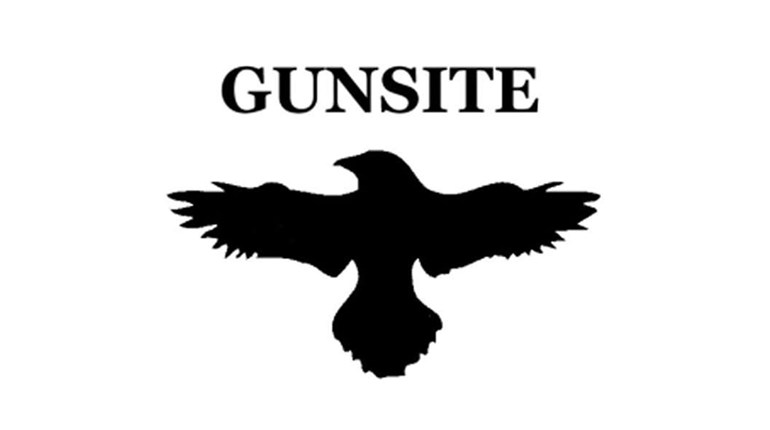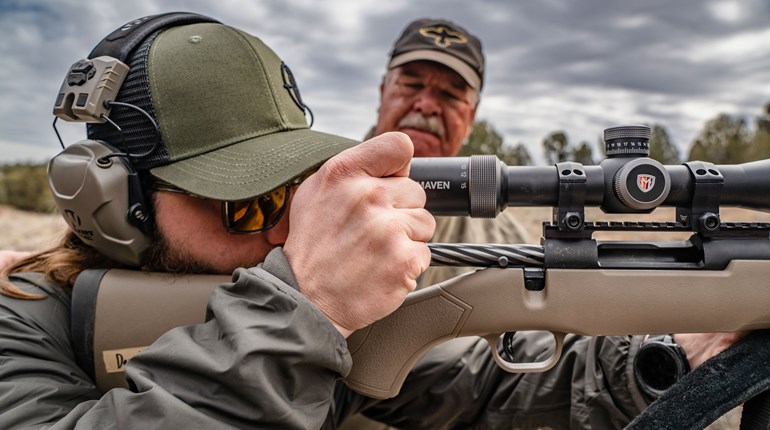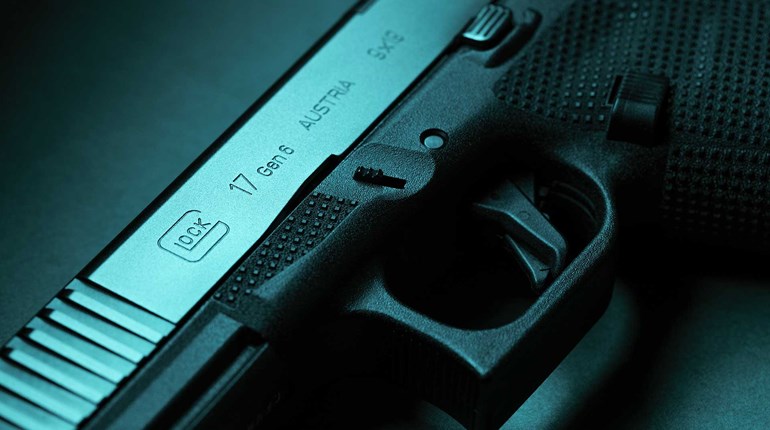
On Saturday morning, after five days of instruction, students were expected to demonstrate their skills in several ways, among them a graded qualification called the "School Drill." Although there have been changes in targets, class content and duration, the 250 drill remains a Gunsite standard.
Seemingly quite simple because only 10 rounds are required, the 250 drill is a challenging exercise combining the need for speed and accuracy. Drill parameters are as follows:
Beginning at 3 yards, fire a single shot to the head in 1.5 seconds. Then do it again. From 7 yards engage the target with two shots to the body in 1.5 seconds. Progressing to 10 yards, repeat the drill, but with an allotted time of 2 seconds. Then, at 15 yards, transition from a standing to a kneeling position and engage the target with two shots to the body in 3.5 seconds. Finally, from 25 yards go from standing to prone, firing two shots to the body in 7 seconds.
In all cases, start with your gun holstered. You'll begin standing with hands down at your sides and transition to alternative shooting positions at 15 and 25 yards. The drill is scored with a possible 50 points. Head and chest scoring rings count for 5 points each. Shots hitting the paper, but outside the scoring rings, are scored as 2 points, with the exception of the first two head shots, which are scored as a 0 if they miss the scoring ring.
You can easily create targets for the 250 drill using a blank piece of cardboard or paper, an 8-inch paper plate and a 4-inch coffee-can lid to trace the scoring rings. The overall size of the target should be about 18 inches wide by 30 inches tall. You can also purchase the current Gunsite target through Gunsite or Brownells.
If you feel a little rushed running the 250 drill from the holster, try shooting it from a low-ready position, working on your draw speed until you can clear the holster cleanly and get hits. If you have trouble kneeling or getting prone, go ahead and shoot the entire drill while standing. For example, when using the 250 drill to test pistols, I usually shoot the 15-yard stage standing and the 25-yard stage kneeling because I'm too lazy to repeatedly go prone. Other variations can include shooting from concealment or from just 15 yards away with pocket pistols.
You will probably find the pair at 7 yards requires a hammer—two very fast shots—while the pair at 10 yards needs to be almost as quick. As we say at Gunsite, "Draw quickly, shoot carefully," meaning you will have more time to shoot if you get your hands moving and clear the holster quickly. The same goes for kneeling or going prone; you will have more time to shoot the quicker you can get into position. You will likely find there is not enough time to shoot little groups, so don't concern yourself with this—just get the hits.
If you can run the 250 drill on demand, making the times with whatever you may be carrying—not just your race gear—and keep scores in the 40s, you're doing very well. If you can consistently score a 50, you're an expert.





































